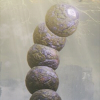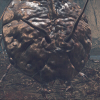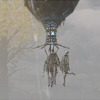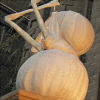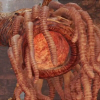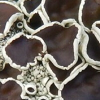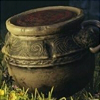
By Jonathan Wojcik and Rev Storm
ENTRY 29: LICHENS
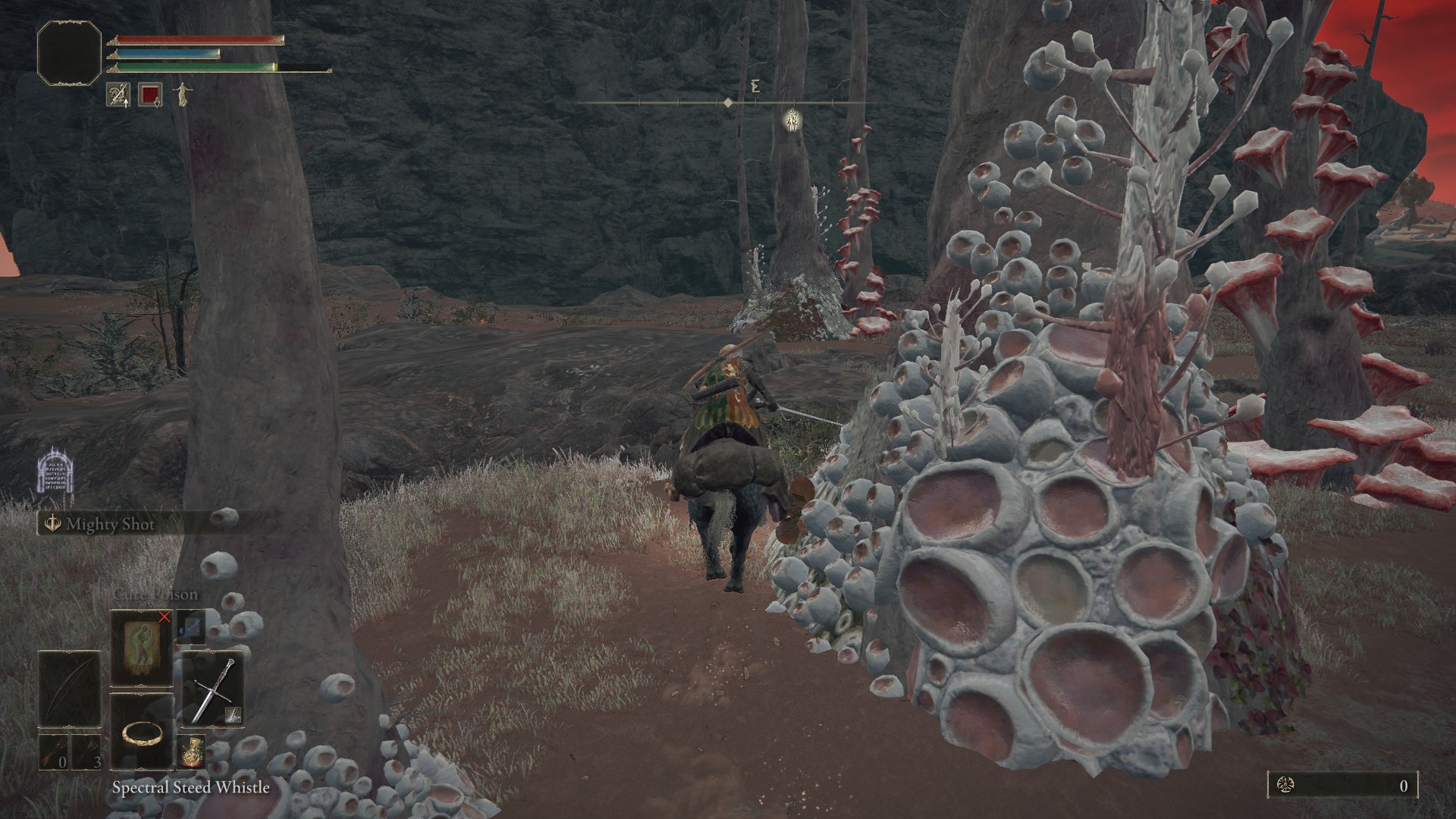
We've seen a few cases of under-appreciated biology in Elden Ring, and another thing I seldom see depicted in any media are
lichens! You'll find positively
gargantuan lichen formations blanketing entire vast areas where
Scarlet Rot has tainted the land, including the branches of the decaying
Arigtree.

Wherever you find lichens, you may also find hauntingly beautiful undead so riddled with even more lichens that the underlying corpse is little more than a partial skeleton.
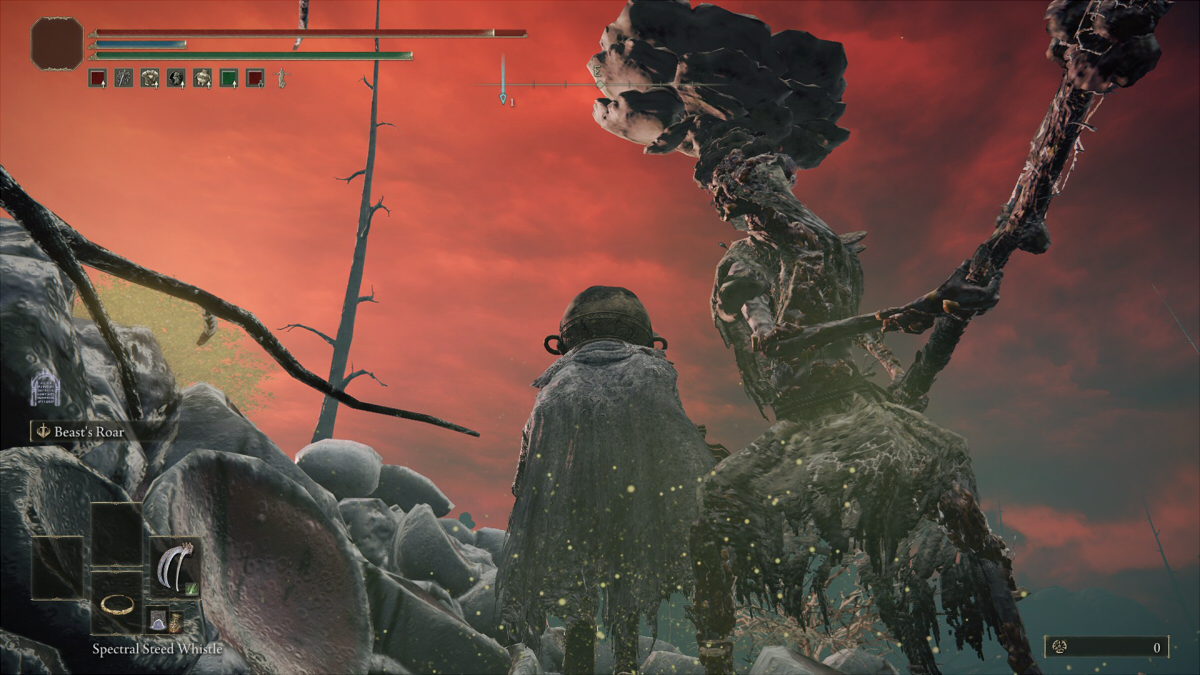
And then, there's the
Servants of Rot, not merely infested corpses, but spellcasters so dedicated to the art of moldering that their heads are just big, flaring crowns of shelf fungi - not to be confused with lichens, mind you, but the two can quite often be encountered together.
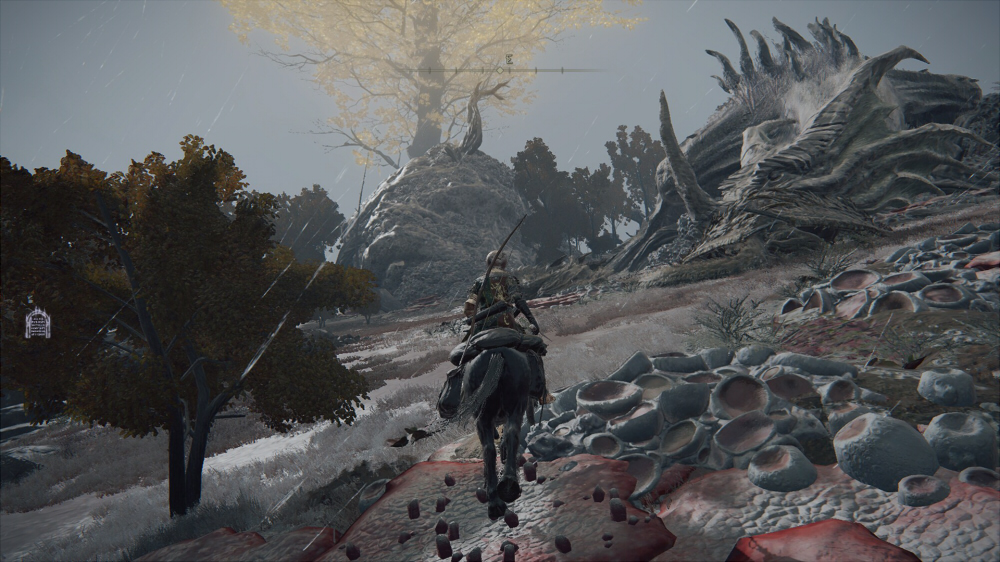
So mighty are the lichens of the Lands Between, they even encrust the gargantuan
Greyoll, the mother of dragons, so powerful that it's been taking her
quite a bit of time to finish dying and her semiliving body continues to fight back in one of the game's most unusual boss battles, waged mostly against the young dragons fiercely watching over her. There are, of course, many other dragons in the game with a lot of lore, but this feature is about highlighting creatures that stood out to me the most, not actually covering every inch of the game's setting, and
you didn't come here to hear about mere dragons, surely!
You came here to learn about things like
lichens!
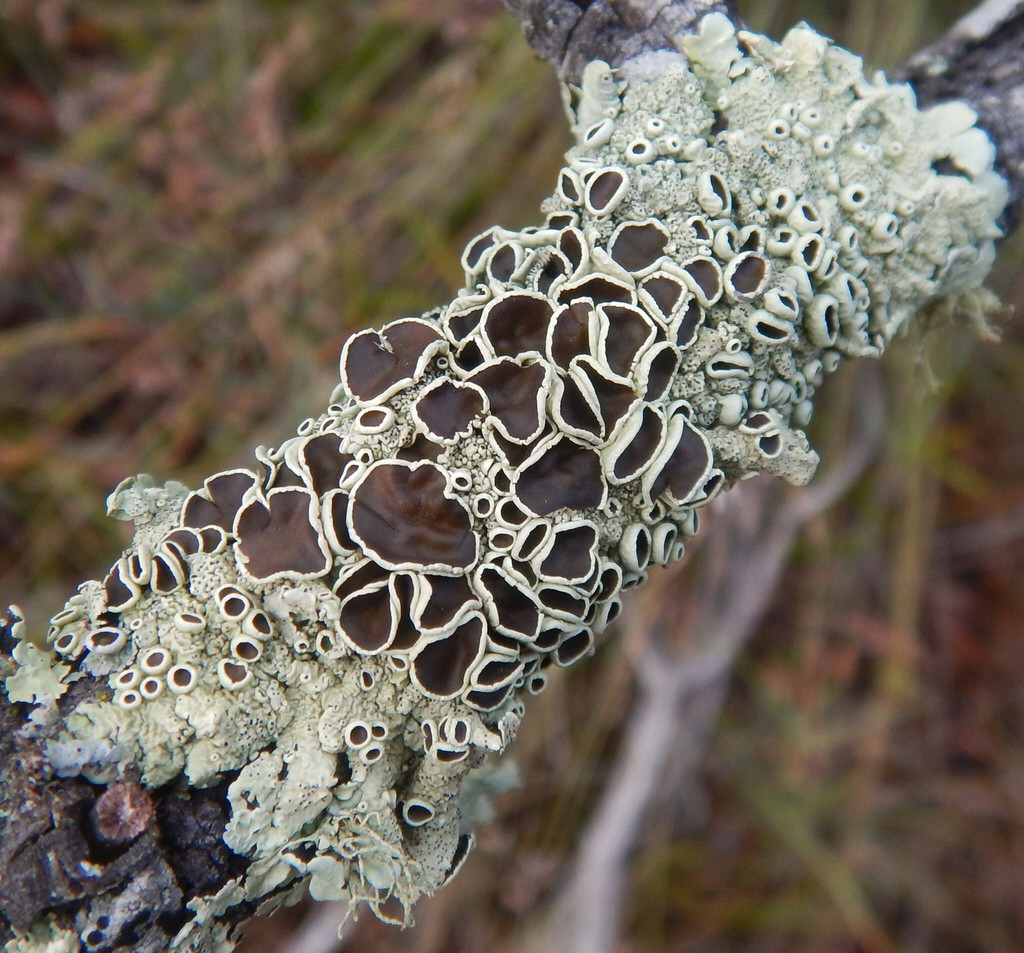
(c) davidsando, some rights reserved (CC BY-NC), uploaded by davidsando
So, the most common of this flora closely resembles such real-world "species" as
Flavoparmelia rutidota with stalkless, cup-shaped fruiting bodies or
apothecia. Lichens only produce these at sexual maturity, and they contain the tiny
soredia you can sort of consider equivalent to spores or seeds, but with lichens, that's a bit complicated; enough to be why I put the word "species" in quotations.

What you need to understand about a lichen is that a lichen is not one categorizable organism. A lichen is a
symbiotic composite formed by multiple
kingdoms of life, traditionally understood to be a partnership between an algae and a fungus. Now "algae" is a much broader term than you might know, referring to a variety of unrelated unicellular life forms capable of photosynthesizing, ranging from microscopic protozoa to macroscopic "seaweeds," some plantlike, some animal-like. Whatever their form however, the ability to manufacture nutrients from energy makes any given algae an
autotroph. Their only limitation is that most algae can only grow in moist environments.
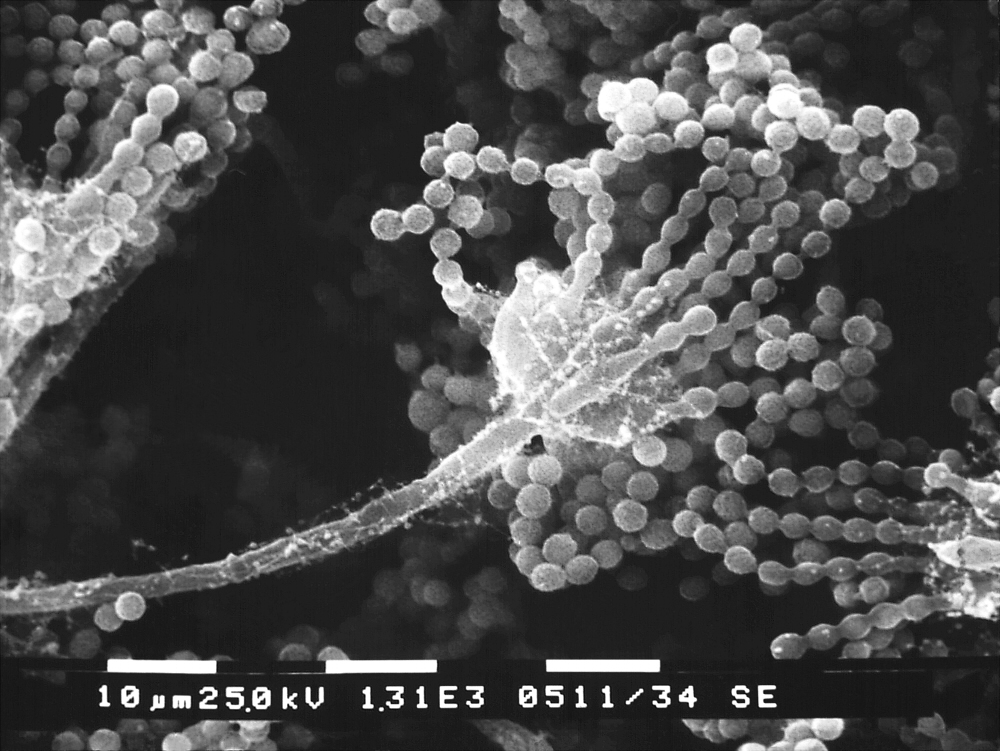
Fungi on the other hand actually
are a distinct category of organism, constituting an entire kingdom of their own, which it bears mentioning are not plants or even related to plants; if anything, the fungi are a bit closer to us animals! Unlike algae, fungi are
heterotrophs, meaning they extract nutrients from other organic matter. In other words, fungi have to "eat" something, which is why they grow in soil, rotting wood or the tissues of other organisms, living or dead.
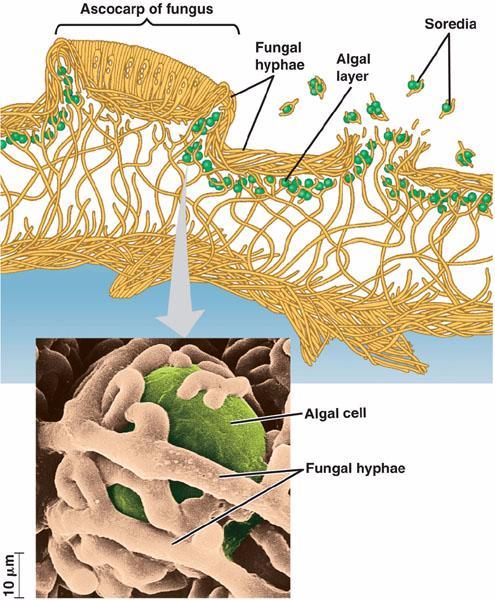
So what happens when you sandwich algae within layers of fungal tissue? The algae is protected from the elements, essentially using the fungus like an exosuit to thrive in even the harshest environments, while the fungus obtains all the nutrients it will ever need from the algae's photosynthesis, and can therefore grow wherever it damn well pleases. This is why you'll find lichens on rock or metal; they aren't feeding on those materials, but taking advantage of real estate inhospitable to other fungi or algae. When it's time to reproduce, they generate the
soredia to be scattered by wind or rain; tiny pellets of algae already wrapped in a young fungus.
BUT HANG ON THERE
BUDDY!!! That was just the
simple explanation. That was "lichens for dummies," and you're no dummy! You can grasp plenty more than that!
The positively
dizzying thing about lichens is that their relationships are
fluid. What we try, pathetically, to denote as a "species" of lichen is not actually the same fungus and the same algae every time. Both of them can genetically vary, and those same species may exist as normal, independent algae or fungi under different circumstances, becoming a lichen or splitting up again when conditions change.

But, sometimes, the algae isn't even an algae at all, but a
cyanobacterium, literally belonging to another unrelated kingdom of life that just happens to have a lot of photosynthesizers.
And then, to the
shock of the scientific community, it was more recently discovered that other groups of fungi - not previously associated with lichens - often form
another integral part of the relationship, nestled between the algae (or bacteria) and the outer walls of the fungal fortress. In fact, this tiny third partner is speculated to actually induce the other fungus to form that thick exo-suit to begin with.
What actually tells these different forms of life to start building a lichen? What really determines the form of that lichen, if not the genetics of the particular species involved? We actually haven't cracked that yet, and you can no doubt imagine the entire topic of lichens as the bogeyman keeping taxonomists up at night. How do you truly define a given type of lichen without some sort of flowchart? Is that any better than naming trees according to which kind of squirrel you saw living in them at the time? How much money do lichenologists have to spend on cork boards and red string??
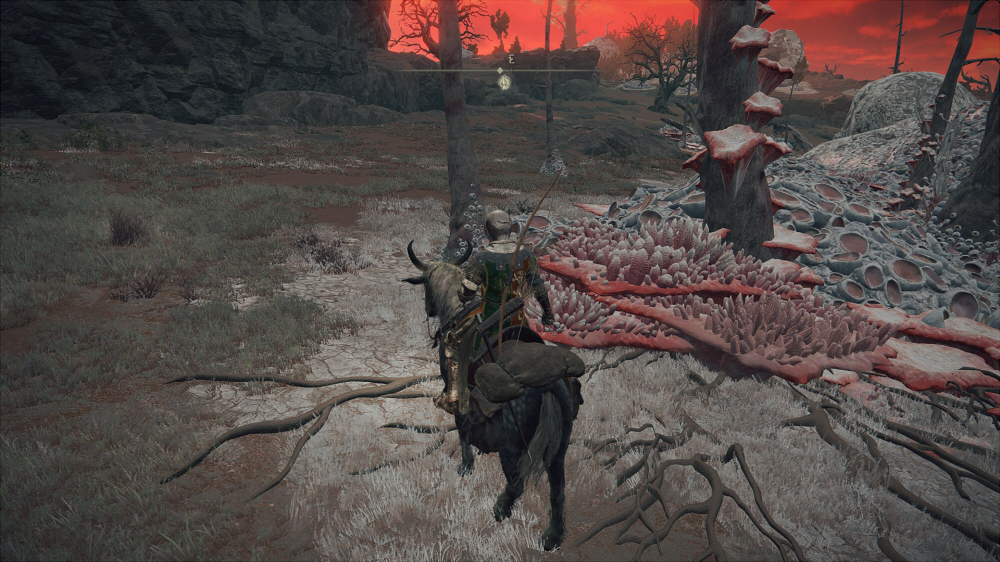
It's possible that lichens only appear in
Elden Ring because someone grabbed a bunch of references for cool looking fungus and called it a day...but I don't get the impression that the art direction of Soulsborne ever operates that way. Anyone even googling the general idea of symbiosis is almost immediately going to get lichens as the star example, and I wager anyone who remembers their Japanese middle school biology already knows that as well. I believe some level of care was put into the specific biota used even for this "mere" set dressing, especially as a representation of the Scarlet Rot's footprint on the very landscape, and especially given
many of this game's other worldbuilding elements. We'll get more into that very soon!
NAVIGATION:


